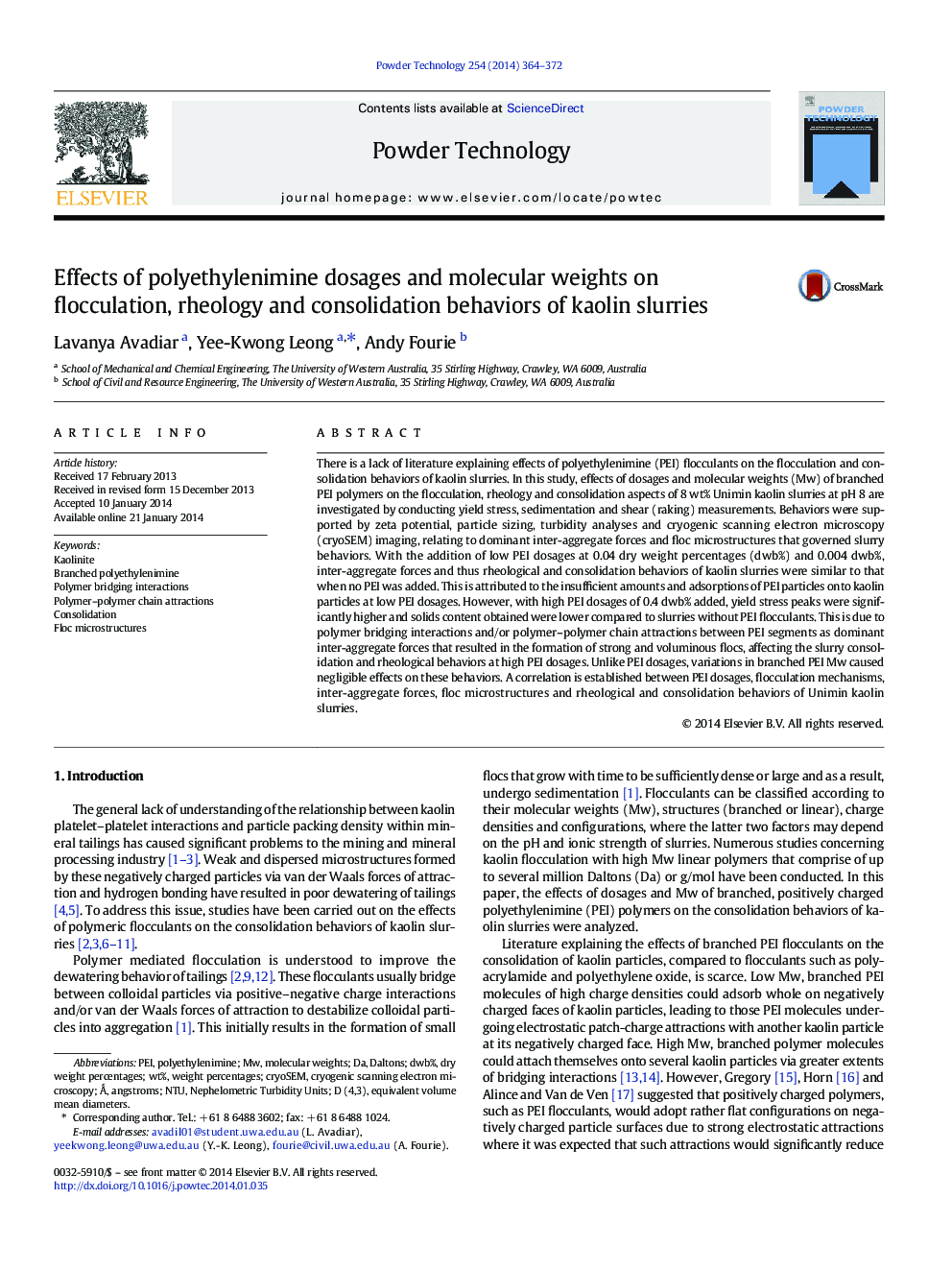| Article ID | Journal | Published Year | Pages | File Type |
|---|---|---|---|---|
| 236264 | Powder Technology | 2014 | 9 Pages |
•Rheology and consolidation behaviors of kaolin with polyethylenimine (PEI) studied•Significant consolidation variations observed with high polymer dosages added•Polymer association of PEI was observed in particle bridging•That produced open, strong flocs with low solids content and high yield stress•Minimal changes to slurry behaviors at varied polymer molecular weights
There is a lack of literature explaining effects of polyethylenimine (PEI) flocculants on the flocculation and consolidation behaviors of kaolin slurries. In this study, effects of dosages and molecular weights (Mw) of branched PEI polymers on the flocculation, rheology and consolidation aspects of 8 wt% Unimin kaolin slurries at pH 8 are investigated by conducting yield stress, sedimentation and shear (raking) measurements. Behaviors were supported by zeta potential, particle sizing, turbidity analyses and cryogenic scanning electron microscopy (cryoSEM) imaging, relating to dominant inter-aggregate forces and floc microstructures that governed slurry behaviors. With the addition of low PEI dosages at 0.04 dry weight percentages (dwb%) and 0.004 dwb%, inter-aggregate forces and thus rheological and consolidation behaviors of kaolin slurries were similar to that when no PEI was added. This is attributed to the insufficient amounts and adsorptions of PEI particles onto kaolin particles at low PEI dosages. However, with high PEI dosages of 0.4 dwb% added, yield stress peaks were significantly higher and solids content obtained were lower compared to slurries without PEI flocculants. This is due to polymer bridging interactions and/or polymer–polymer chain attractions between PEI segments as dominant inter-aggregate forces that resulted in the formation of strong and voluminous flocs, affecting the slurry consolidation and rheological behaviors at high PEI dosages. Unlike PEI dosages, variations in branched PEI Mw caused negligible effects on these behaviors. A correlation is established between PEI dosages, flocculation mechanisms, inter-aggregate forces, floc microstructures and rheological and consolidation behaviors of Unimin kaolin slurries.
Graphical abstractThis study explains the significant effects to floc microstructures formed when high polyethylenimine dosages are added into kaolin slurries. Particle–polymer collision rate increases to result in non-equilibrium flocculation that propagates polymer bridging interactions. That produces strong and open flocs. Rheology and consolidation behaviors of kaolin slurries are resultantly affected.Figure optionsDownload full-size imageDownload as PowerPoint slide
